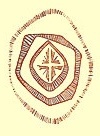A Catholic website for the modern reader

The Communion Rite
by
Fr. William Messenger
(These explanations were originally compiled to provide a place where Catholic students at USC could easily get information and quickly receive answers to their questions about part of the Liturgy of the Mass and how we celebrated it at the Catholic Center, especially given that the experience might be alien to what they knew in their home parishes. They are not meant to be exhaustive, and many parishes do not celebrate this part of the Liturgy the same way. Still, these reflections offer some insight into this part of our paryer.)
Beginning with the Our Father, there are several things over the years that I have done during our celebration that may be different from what people experience in their home parishes. This section explains them. Beyond this explanation, I strongly encourage everyone to read Cardinal Roger Mahony’s letters on Sunday worship located on elsewhere on the Liturgy page.
Communion Rite:
The Lord’s Prayer (Our Father) begins the Communion Rite. There is a movement during this part of our celebration that is rich in symbol and in the power of the Spirit. We begin by praying together the prayer that Jesus gave us. Following that prayer we express our peace with one another, which prepares us to receive the bread of life and cup of salvation. We join in the unity of the Eucharist (Holy Communion) and conclude with the Prayer after Communion.
—First, let’s take a look at the Lord’s Prayer.
Many people are accustomed to holding hands during the Our Father. While there is nothing fundamentally wrong with holding hands, it does raise a problem. As a great symbol of unity, especially when the entire congregation holds hands at the same time, it is truly impressive. However, precisely because of its power, it is misplaced. Anyone observing our celebration could easily draw the conclusion that this is the most important and unifying moment of the service. As a result, it usurps what is our unequivocal symbol of unity, the Eucharist. As St. Paul writes, “Because the loaf of bread is one, we, though many, are one body, for we all partake of the one loaf” (1Cor 10:17). It is not the holding of hands, but the sharing in Communion that makes us one.
We follow the recommendation of Cardinal Mahony, viz. that the entire congregation join in the “Orans” posture. It is the raising of hands, like what we see the priest do frequently in the celebration. This posture of uplifted hands continues through the acclamation, “For the kingdom….”
—Sign of Peace.
This moment in our celebration is the immediate preparation for Communion. It is not frivolous. Since the Eucharist is our symbol of unity, we express our readiness by acknowledging that we are at peace with one another. A warm embrace or other familiar sign symbolizes this presence of Christ among us.
—Procession.
Following the invitation to Communion, the whole congregation begins the movement to the Lord’s table. We are fortunate in the design of our chapel, for the congregation truly surrounds the altar--one might even use the word “engulfs”. The sacred action really takes place in our midst. We are not distant observers. For the procession we recommend that those in the back rows approach the table first. This fulfills the Cardinal’s vision of the whole room being surrounded by a procession. As he says in his letter, “Here is a Church partaking of the sacred banquet.”
—Standing during Communion.
We become one in the body and blood of Christ. This process of God acting so powerfully in our lives is obviously not a personal experience. It continues throughout the Communion procession and reception. So we ask all members of our community, even those who choose not to receive, to remain standing until the whole congregation has received Communion and returned to their places. The movement is now complete and we have all become one.
—Prayer after Communion.
Between receiving Communion and the closing prayer, there is time for meditation. This meditation may take the form of silence or be accompanied by music. Since the prayer concludes the Communion Rite, ordinarily announcements will not be made until after the prayer is finished. This helps to preserve the integrity of the Communion Rite.
(A more comprehensive appreciation of these recommendations can be achieved by reading Cardinal Mahony’s letters, so once again we encourage everyone to take the time to pray and reflect over these letters.)
(Fr. William Messenger is a priest in the Archdiocese ofLos Angeles)
